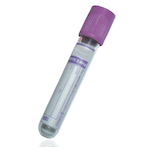
- Home
- Clinical Chemistry Tests
- Everolimus
Everolimus
Specimen Volume
1 mL whole blood (minimum sample volume 600 uL)Sample Preparation
Turnaround Time
2 working daysSample Processing In Laboratory
Daily (Monday to Friday)Sample Stability
8 days at 4ºCGeneral Information
Everolimus is an immunosuppressant that acts through inhibition of the mammalian target of rapamycin (mTOR), an evolutionarily conserved serine/threonine kinase that plays a central role in the regulation of many cellular functions, including metabolism, growth, proliferation, survival, and memory. Everolimus is extensively metabolized, primarily by CYP3A4, thus its use with inducers or inhibitors of that enzyme may require dose adjustment.
Everolimus is approved for the prevention of transplanted organ rejection and is characterized by a narrow therapeutic window, rather high intraindividual and interindividual pharmacokinetic variability and established drug exposure–response relationships. In the transplantation setting, overexposure to Everolimus may not only cause exacerbation of specific toxicities but also cause excessive immunosuppression likely to affect infection control, whereas very low levels of exposure may result in rejection.
Potential adverse effects of Everolimus treatment include gastrointestinal disorders, hyperlipidaemia, thrombocytopenia, interstitial pneumonitis, oedema, mouth ulcers, impaired wound healing, hepatotoxicity, and nephrotoxicity.
Everolimus concentrations are measured routinely in transplant assessment, although therapeutic targets vary depending on the transplant site and institution protocol. Everolimus TDM is not usually an emergency, because of its long half-life, moderate safety concerns, and potential position as an adjunctive therapy.
Patient Preparation
Trough sample required. Sampling should be standardized to occur within 1 hour before the next dose, which should be taken at the same time everyday and preferably without food. If the latter is not possible for practical or medical reasons, EVR should be dosed consistently with food to reduce fluctuations. Everolimus steady-state concentrations should be monitored 4–6 days after administration of the first dose and after a change in dose.
Reference Range
Reference or therapeutic ranges are not reported as therapeutic target ranges are applied on an individual basis dependent upon specialty, dosing, period in treatment regime and clinical status. Further advice can be obtained from the appropriate speciality.
Specifications
- EQA Status: LGC
- EQAS Scheme: Yes
Link to Further Information
https://bnf.nice.org.uk/drug/everolimus.htmlCreation Date
Monday, 02 July 2018Modification Date
Friday, 14 October 2022General Information
Location of Laboratories
Copyright UHB Pathology 2025
Protection of Personal Information – Pathology Laboratories Services comply with the Trust Data Protection Policy and have procedures in place to allow the Directorate and it’s employees to comply with the Data Protection Act 1998 and associated best practice and guidance.
The laboratories at Queen Elizabeth Hospital, Heartlands Hospital, Good Hope Hospital and Solihull Hospital form part of the services provided by University Hospitals Birmingham and are UKAS (United Kingdom Accreditation Service) accredited to the ISO 15189:2022 standard. For a list of accredited tests and other information please visit the UKAS website using the following link: https://www.ukas.com/find-an-organisation/
- Molecular Pathology is a UKAS accredited medical laboratory No. 8759
- Biochemistry is a UKAS accredited medical laboratory No. 8910
- Haematology and Transfusion is a UKAS accredited medical laboratory No. 8784
- Clinical Microbiology is a UKAS accredited medical laboratory No. 8760
- Cellular Pathology is a UKAS accredited medical laboratory No. 10141
- United Kingdom Health Security Agency laboratory is a UKAS accredited medical laboratory No.8213
Tests not appearing on the UKAS Schedule of Accreditation currently remain outside of our scope of accreditation. However, these tests have been validated to the same high standard as accredited tests and are performed by the same trained and competent staff.
For further test information, please visit the test database: https://qehbpathology.uk/test-database
For further information contact Louise Fallon, Quality Manager, 0121 371 5962/ 0121 424 1235
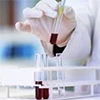 Biochemistry
Biochemistry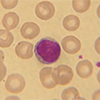 Haematology and Transfusion
Haematology and Transfusion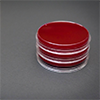 Clinical Microbiology (Including Virology)
Clinical Microbiology (Including Virology) Cellular Pathology
Cellular Pathology General Information
General Information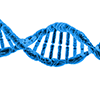 Molecular Pathology
Molecular Pathology